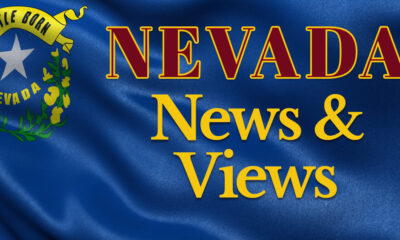(Christopher Prandoni) – Every January, the Bureau of Labor and Statistics releases its annual union membership data, a comprehensive report detailing unionization rates and trends in America. With uncanny reliability, the BLS has told its readers the same thing year after year: union members are increasingly government workers. In fact, in nearly year since 1980, the percentage of union workers employed by the government has increased—2010 was no different.
This trend was pushed to the forefront last year when BLS data revealed that 2009 was the first year in which a majority of union members worked for the government. 7,900,000 or 37.4 percent of government workers in ’09 were unionized compared to 7,400,000 or 7.2 percent of private sector workers. All in all, 51.5 percent of union members were government workers.
And while the economic downturn reduced the number of unionized private and public sector workers, government workers as percentage of total union membership continued to climb to 51.8 percent. The number of unionized workers in the private sector dropped to 7,000,000 or 6.9 percent whereas government workers dropped to 7,600,000 or 36.2 percent.
Reading the writing on the wall, organized labor knows its future is tied to its ability to further unionize government workers. The implications of this demographic shift are hard to understate. Viewing more government employees as new sources of revenue, unions universally support the expansion of government regardless of its effects on state budgets or services. This vicious cycle creates a feedback loop where unions lobby for increased government spending, are appeased, see their membership, clout, and influence increase, and then return to the government trough.
Americans had a front row seat to this phenomenon in the summer and fall of 2010 when public sector unions spent an astounding $200 million to get Democrats elected to Congress, state houses, and gubernatorial mansions. Leading the charge was the American Federation of State, County and Municipal Employees which spent over $90 million during the last election cycle.
The next battle between reformers and public sector unions will be fought over states ailing, drastically underfunded pension plans. The sum of states’ underfunded plans is estimated to be three trillion dollars. Categorically opposed to austerity measures, unions have downplayed their roll in the impending pension crisis and then argued that taxpayers should pick up the tab.
In New Jersey, Chris Christie had a knock-down, drag-out-fight with the NJ teachers’ unions after he upped teachers’ annual pension contribution to 8.5 from 3 percent. While taxpayers covering 91.5 percent of a teacher’s retirement plan is less than ideal, it is markedly better than the pre-Christie deal. All throughout this debate Christie was demonized as a corporate fat cat who wanted nothing more than to put retired teachers on the streets. Public sector unions spent seven million dollars disseminating this lie.
Unions can no longer purport to represent the working man toiling 11 hour days just to put food on the table. Indeed, the average union worker has a cushy government job, makes substantially more than the average American, and has ample job security. The demographic makeup of unions is changing, our perception should too.
(Christopher Prandoni serves as a Federal Affairs Manager of Americans for Tax Reform (ATR). He is also the Executive Director of the Alliance for Worker Freedom (AWF), an organization that combats anti-worker legislation and promotes free and open markets.)


Facebook
Twitter
Pinterest
RSS